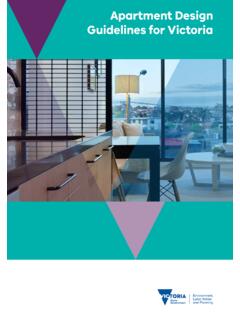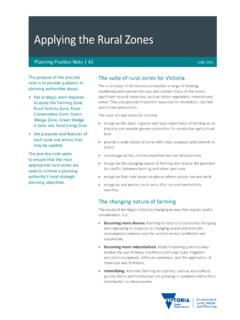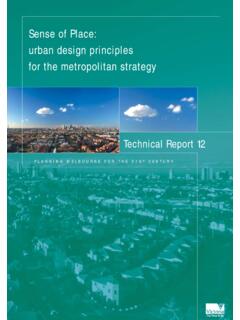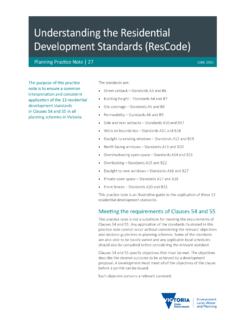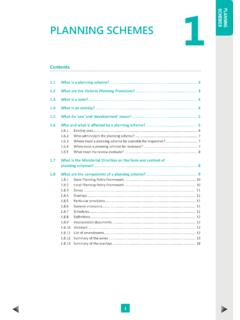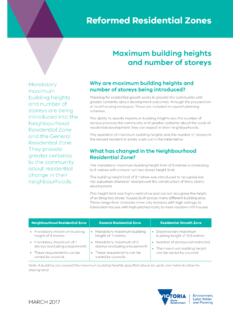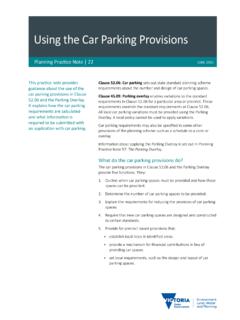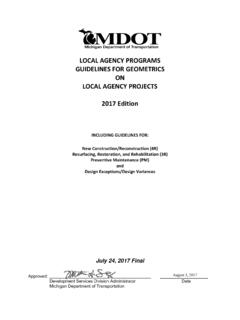Transcription of Rural Residential Development - Planning
1 What is Rural Residential Development ? Rural Residential Development refers to land in a Rural setting, used and developed for dwellings that are not primarily associated with agriculture. Some agriculture may take place on the land however it will be ancillary to the use for a dwelling. It is likely to be carried on for lifestyle reasons and is unlikely to provide a significant source of household income. Rural Residential land is typically also used for non-agricultural home occupations or for large gardens. These lots are larger than typical Residential lots, but are usually too small for agricultural of its primarily Residential function, Rural Residential Development requires access to most of the normal services and infrastructure provided in urban settlements.
2 Typically it also generates urban Residential amenity zones usually applied to Rural Residential land are: The Low Density Residential Zone (LDRZ) is a Residential zone. It specifies a lot size of at least hectares in areas where reticulated sewerage is not connected or hectares for each lot connected to reticulated sewerage. A different lot size can be specified in a schedule to the zone. The Rural Living Zone (RLZ) is a Rural zone. It specifies a lot size of at least 2 hectares and provides opportunities for some Rural uses to occur. A different lot size can be specified in a schedule to the zone.
3 The Green Wedge A Zone (GWAZ) is a Rural zone. It provides for lot sizes of 8 hectares and above. It applies to non-urban land outside the Urban Growth Boundary to protect and recognise the area s agricultural, environmental, historic, landscape, infrastructure, natural resource and Rural living Residential Development can occur in other Rural zones, but generally, land proposed for Rural Residential Development should be included in the Low Density Residential Zone or the Rural Living Residential DevelopmentPlanning Practice Note | 37 JUNE 2015 The purpose of this practice note is to provide guidance when Planning for.
4 Or assessing proposals for Rural Residential use and Practice Note 37 | Rural Residential Development 2 Farm dwellingsFarm workers and their families may need to live in farm dwellings, close to stock, crops or plants that require regular supervision. Farm dwellings that are genuinely required to support an agricultural use are not a form of Rural Residential lot agricultureHigh value crops, such as grapes, olives, flowers, fruit or tobacco, can be cultivated on small lots. Some intensive agricultural uses can also take place on small lots. Dwellings on these lots will normally be farm dwellings.
5 However, new small lot agriculture proposals need to be considered carefully, to ensure that they do not become unplanned Rural Residential does Rural Residential Development require special consideration?The Planning scheme should ensure that reasonable opportunities are found for Rural Residential Development , as part of providing for housing diversity and , Rural Residential Development can have environmental, social and economic costs that are significantly higher than those of standard Residential use conflicts between agricultural activities and the amenity expectations of Rural Residential dwellers should be minimised.
6 Significant impacts to primary production or to the environmental or cultural values of a Rural area should be avoided. Finite and valuable natural resources present on the land should not be local environment and landscape should have the capacity to absorb more intensive use and Development without significant or irreversible harm to its values or to the new use and Development . Demand for costly or inefficient community services or infrastructure should not be considerations mean that the following broad questions should be answered in sequence: Strategy: Does Rural Residential Development align with the overall strategic Planning of the municipality?
7 Housing need: How much Rural Residential Development is required to provide appropriate housing diversity and choice to meet housing needs? Location: Where should new Rural Residential Development take place? Subdivision and design : Is the new Rural Residential Development subdivided and designed in an attractive setting offering high amenity and efficient infrastructure?These broad questions should be taken into account when considering a proposed , final detailed subdivision and design matters can be considered as part of the permit application proposals must be accompanied by a site and context and context descriptionThe site analysis should document the opportunities and constraints of the site in terms of landform, vegetation coverage and surrounding land uses and an explanation of how the proposal responds to the site site analysis should include where relevant.
8 Topography of the land (including ridgelines, landscape, geography, slope gradients and erosion areas) road access fire hazard land liable to inundation by floodwaters drainage lines and dams any significant environmental features including habitat corridors, threatened species, wetlands and watercourses vegetation category (scattered or patch, extent, risk status and ecological vegetation class), quality (habitat hectare assessment) and locationPlanning Practice Note 37 | Rural Residential Development 3 waterway values land degradation (for example, salinity), land stability (land slip)
9 Or other erosion related hazards soil capability soil contamination with regard to past uses of the land views weather conditions including wind patterns available infrastructure including power, water and telecommunications existing buildings and works adjoining land uses and neighbouring buildings and works any other matter relevant to the site and its Rural Residential Development fit into the overall strategic directions and Planning of the municipality?It is important to consider a proposal for Rural Residential Development as part of the broader strategic proposal for Rural Residential Development must be considered against the state, regional and local strategic Planning policies and objectives for the include.
10 The State Planning Policy Framework (SPPF) and the need to protect agricultural land and natural resources and the encouragement of urban consolidation Regional plans such as Plan Melbourne and the Regional Growth Plans other regional Planning and land management strategies such as the Great Ocean road Region Strategy 2004, the Victorian Coastal Strategy (as revised), Coastal Spaces Recommendations Report 2006, regional catchment management strategies and regional waterway objectives and strategies in the Municipal Strategic Statement (MSS), and any adopted land use strategy such as a housing strategy or Rural land use strategy.
